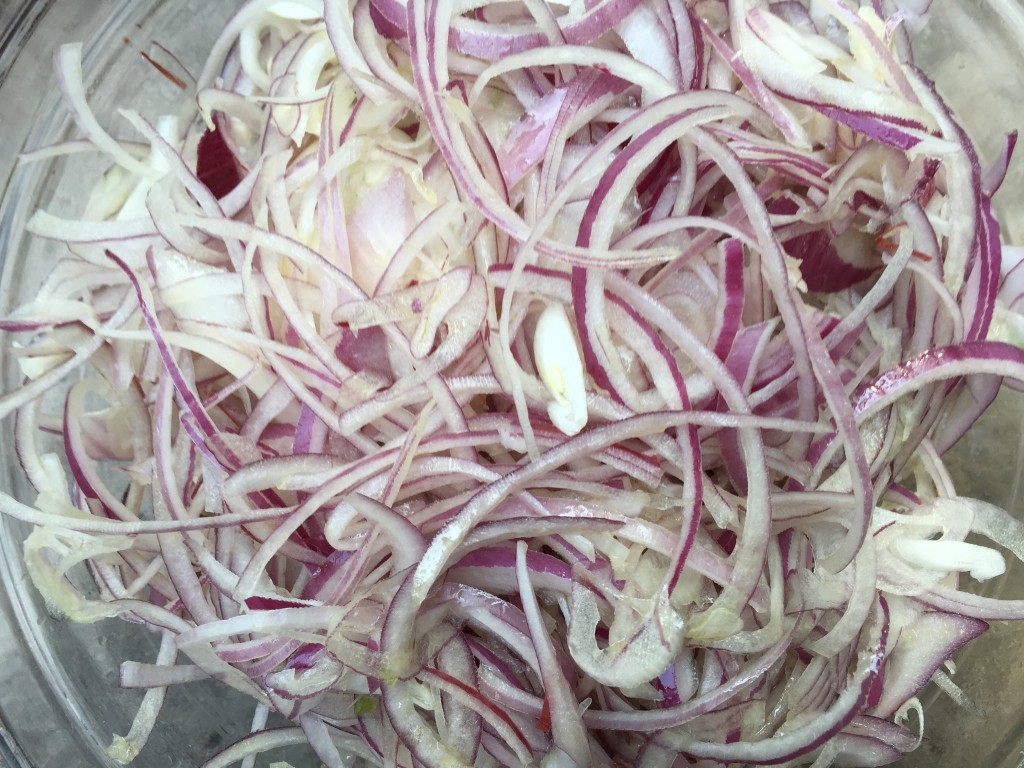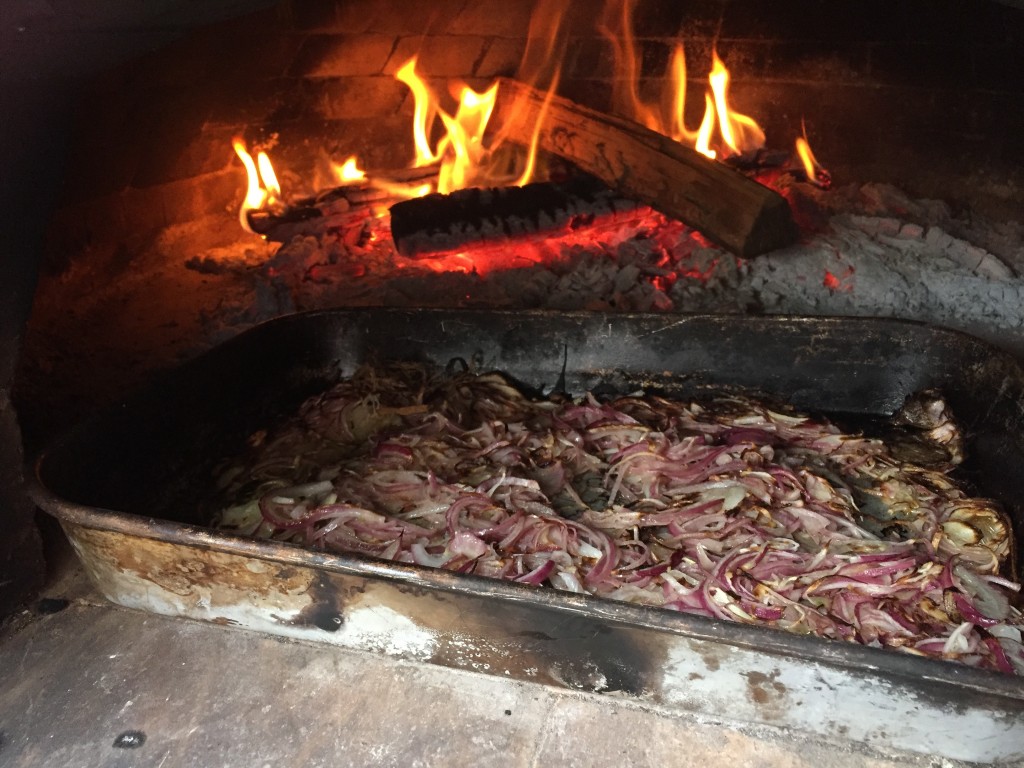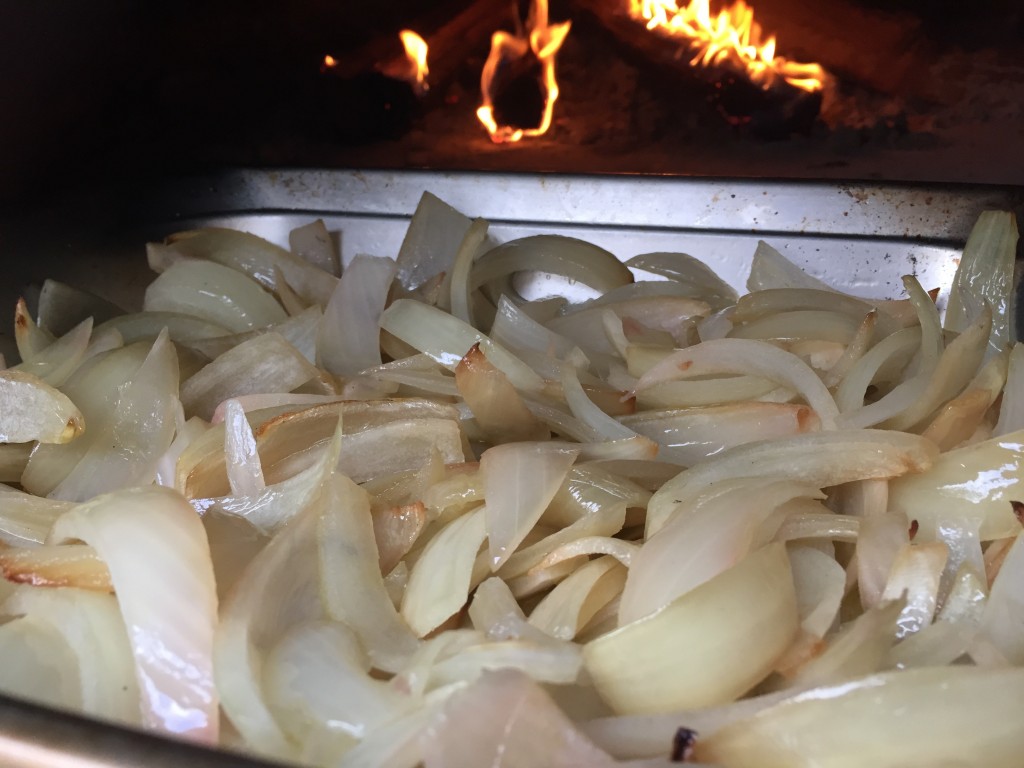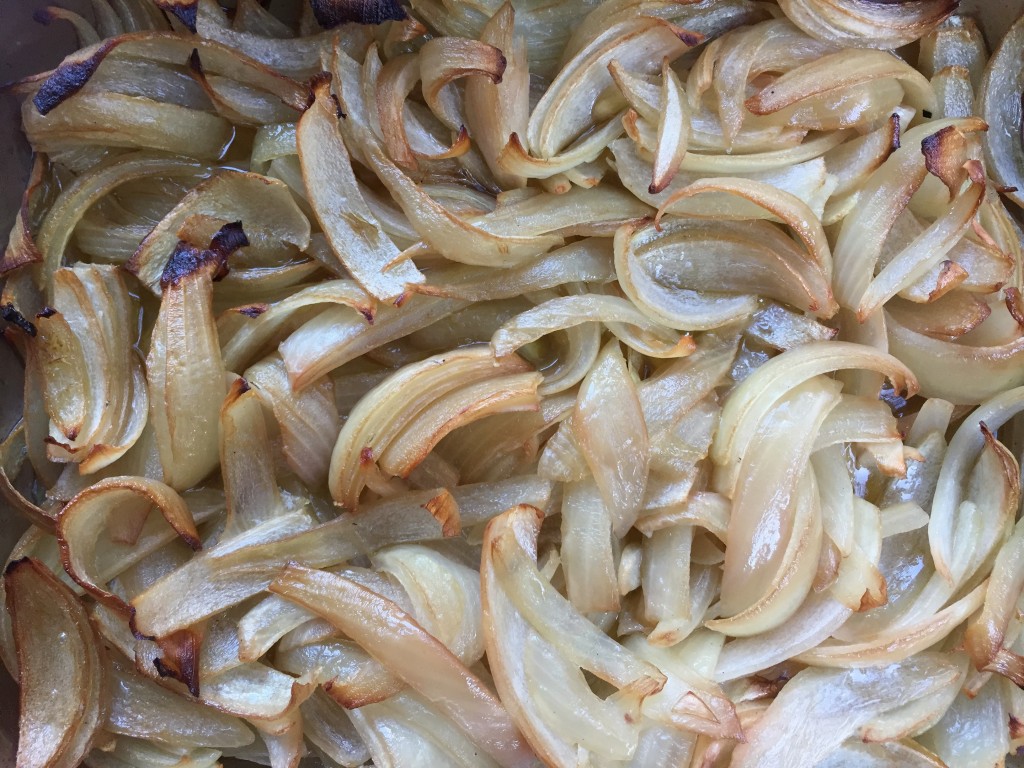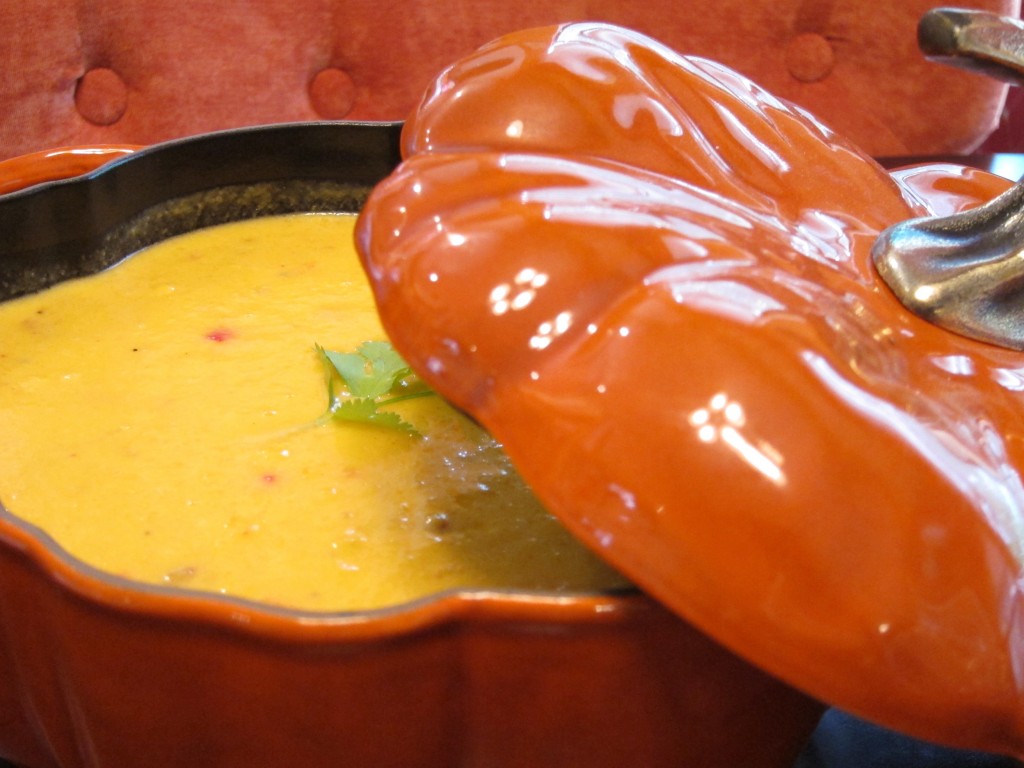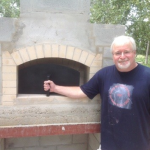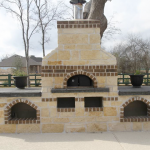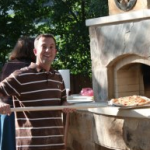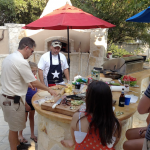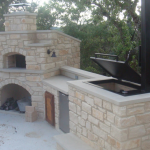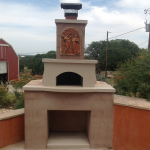Roasting Onions: Side, Condiment, Secret Ingredient
It’s a running joke with friends and family that I’m often trying to do too many things at one time. A few months back, despite the lanyard timer, I was roasting onions and left them tucked into the oven near the fire for a little bit longer than planned. This mistake turned into one of those fortuitous food accidents. Like the potsticker legend, my super charred onion turned out to be a family favorite.
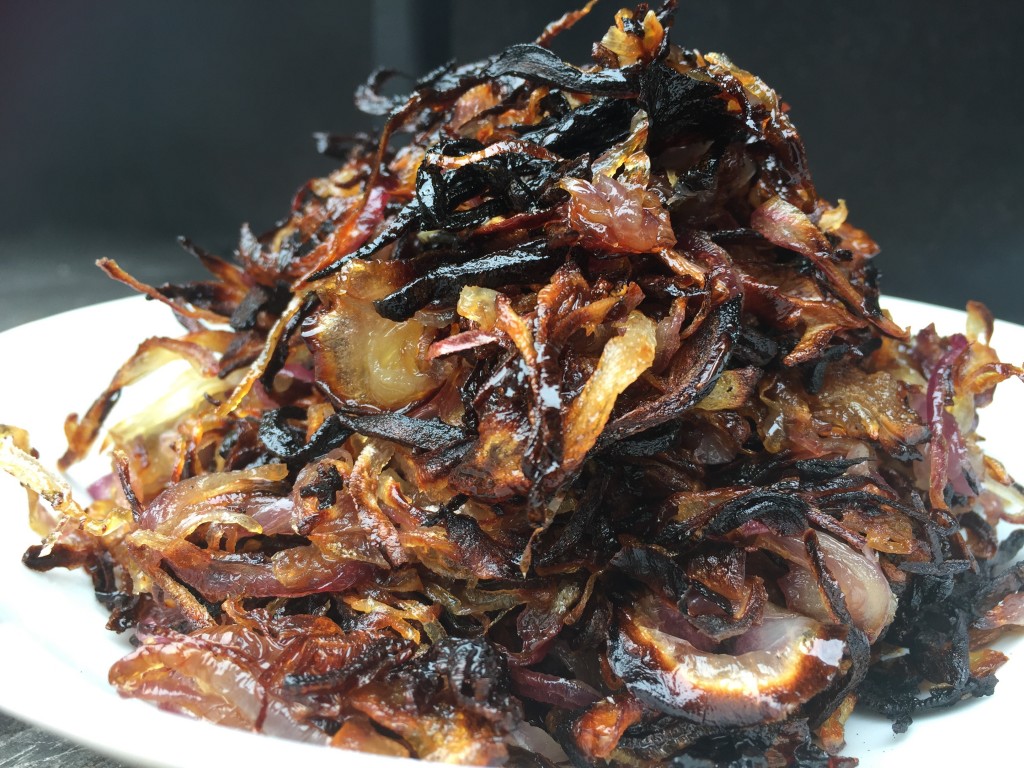
These onions might look overdone, but don’t write them off without trying them. Ever had shoestring onions on top of a burger or steak? These crispy roasted onion strings add a similar crunch and sweetness without the deep fryer and breading. These days, anytime we buy a big bag of onions, some of them get sliced thinly to make these oven-shoestrings. Of course my favorite method is in the wood-burning oven, but they work under a conventional broiler and even in a toaster oven.
More than just stuffing
Continuing our Thanksgiving theme (see cranberries and dry-brine turkey), we experimented with roasting onions in the wood-fired oven. If you buy a big bag this week for stuffing, try cooking them on their own in either high or low heat. Guy Crosby, the Cooking Science Guy says, “when onions are cooked their flavor turns into a mellow, sweet, even savory, meaty sensation …cooking the onions for a sufficient length of time helps to increase the meaty flavor…Is it any wonder slowly-cooked onions add such luscious flavor to meat dishes” (The Science of Onion Flavor).
“Unlike garlic, changing the intensity of onion is less a matter of how much you use or how you cut it and more a matter of how you cook it… cooking onions depends on two things: time and heat. Mince them up or double the amount, the flavor will still come down to how long and how hot you cook them” (Raw to Sweet: How to Change the Intensity of Onions from The Kitchn food magazine).
Roasting onions with high heat
One of the things I love about high-heat roasting veggies is getting great flavor while maintaining some of the original texture. As with carrots and Brussels sprouts, cooking onions quickly with high heat retains their crunch while transforming their flavor. “A minute or two over high heat is just enough time to take the edge off the oniony flavor, but leaves the texture nicely crisp. (The Kitchn)
When roasting onions on high heat, I use whatever variety of onion we have on hand. Red onions are traditionally served raw, but they work well with high-heat for pizza toppings.
Spreading thinly cut onions across a large pan helps them to cook evenly with minimal stirring. Just rotate the pan every once in a while and move the onions around. These thinly sliced onions are on their way to shoestrings, but a medium sized slice or chop will maintain some crunch.
Low and slow
“If you turn the heat down to low while you cook your onions, their flavor and texture transforms even further. They will gradually brown, become completely limp, and even start to disintegrate. They caramelize and taste sweeter the longer you cook them – even up to an hour or more” (The Kitchn).
This low-and technique for roasting onions is perfect for making French Onion Soup. Cook’s Illustrated tested this method, “the good news is that caramelizing the onions, deglazing the pot, and then repeating this process dozens of times will keep ratcheting up the flavor. The bad news is what a laborious, hands-on process this proved to be. Fortunately, we found that if we first cooked the onions covered in a hot oven for two and a half hours, we only needed to deglaze the onions on the stovetop three or four times.” These softer, intensely flavored onions also make great pizza toppings and work as the base for dips, salad dressings too.
One step further for meaty flavor
With a wood-burning oven you can take low and slow caramelized onions to another level by adding smoky flavor. These onions add wonderful texture and flavor to vegetarian dishes and doubly enhance the flavor of meats. Smokiness reads as meatiness on most people’s palate. Using your oven door to choke out the fire while the onions are cooking will inject a rich smoky flavor. (See our blog on creating smoky flavor.)
When roasting onions with a low to moderate live fire, put the door on tightly to choke out the flames. This will create a puff of smoke trapped in the vault. Leave the door on for 15-20 minutes. The smokiness makes these onions work as a meat replacement in vegetarian dishes or it intensifies the flavor of any protein.
Secret Ingredient?
Roasting onions low and slow yields a flavor boost you can add to almost anything. Caramelizing is even easier with a wood-burning oven because it holds heat so well. On the cool-down cycle, you have hours of steady, low heat at your disposal. Toss several pounds of onions with a bit of oil and salt into a hotel pan, cover them with foil, and leave them for an hour or two (depending on the heat). You don’t need to manage them at all.
The intense meaty pieces of onion freeze well and keep for a long time. Freeze in ice cube trays, muffin tins or zip-top bags. In their article Why You Should Freeze Caramelized Onions The Kitchn editors list a few go-to uses for caramelized onions, “it’s easy to quickly inject food with a big shot of flavor. Throw a chunk into a pot of soup, into a braise or stew, use it as a filling for an omelet, or just add to your next sandwich or burger — even if you’re vegetarian or vegan, these onions will add a ton of satisfying, deep flavors without the use of meat or cheese.” I like to use roasted onion in pan sauces for pasta, salsa, in omelettes and quiche, as pizza toppings, and in soups, dips, and tucked into anything that needs a little bit of flavor oomph.


